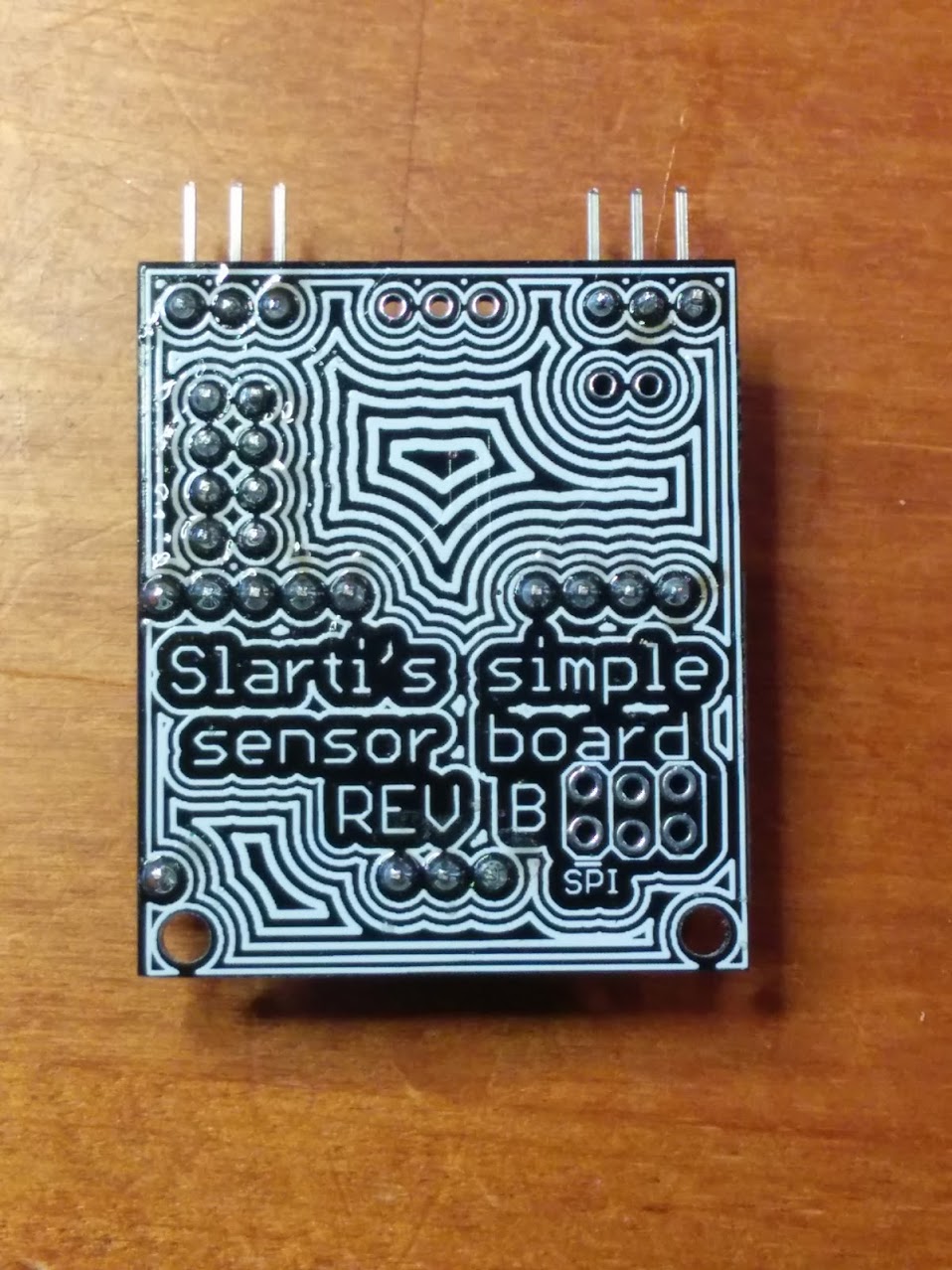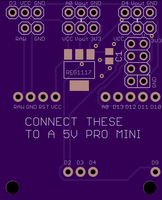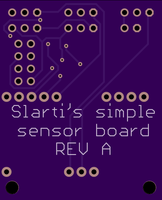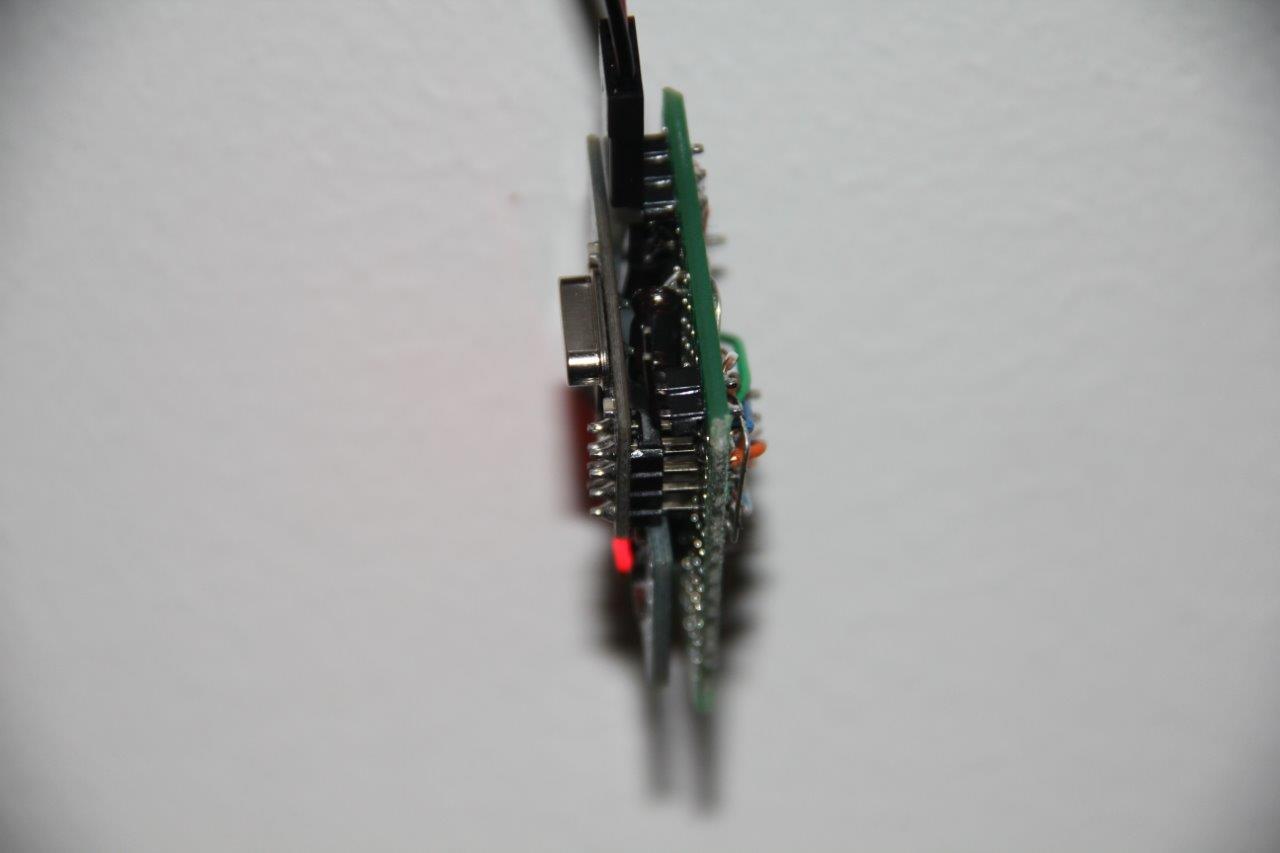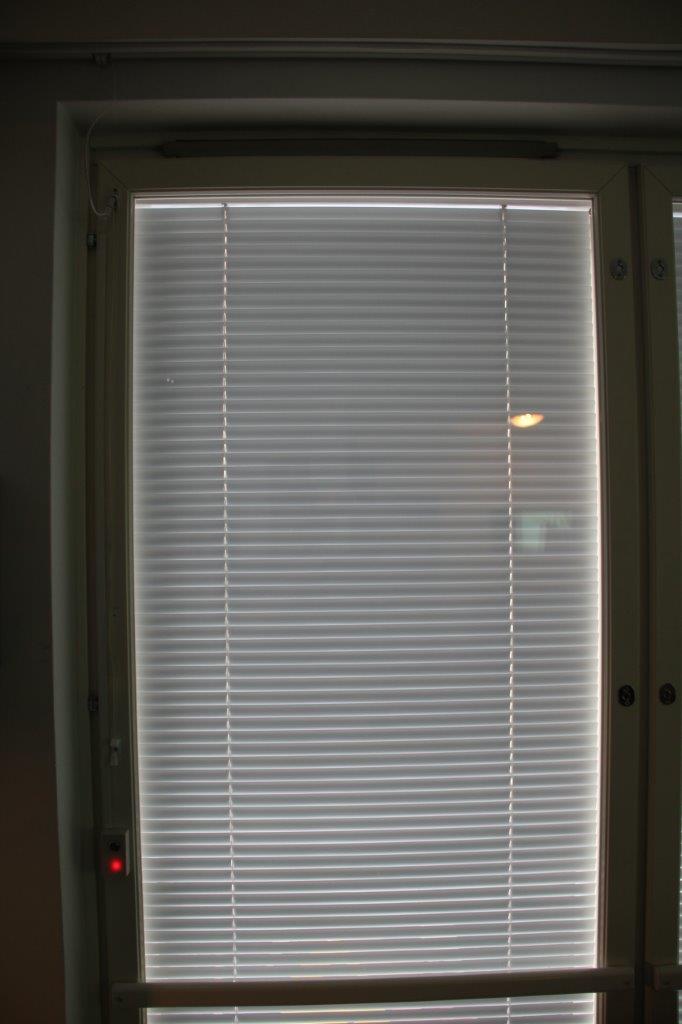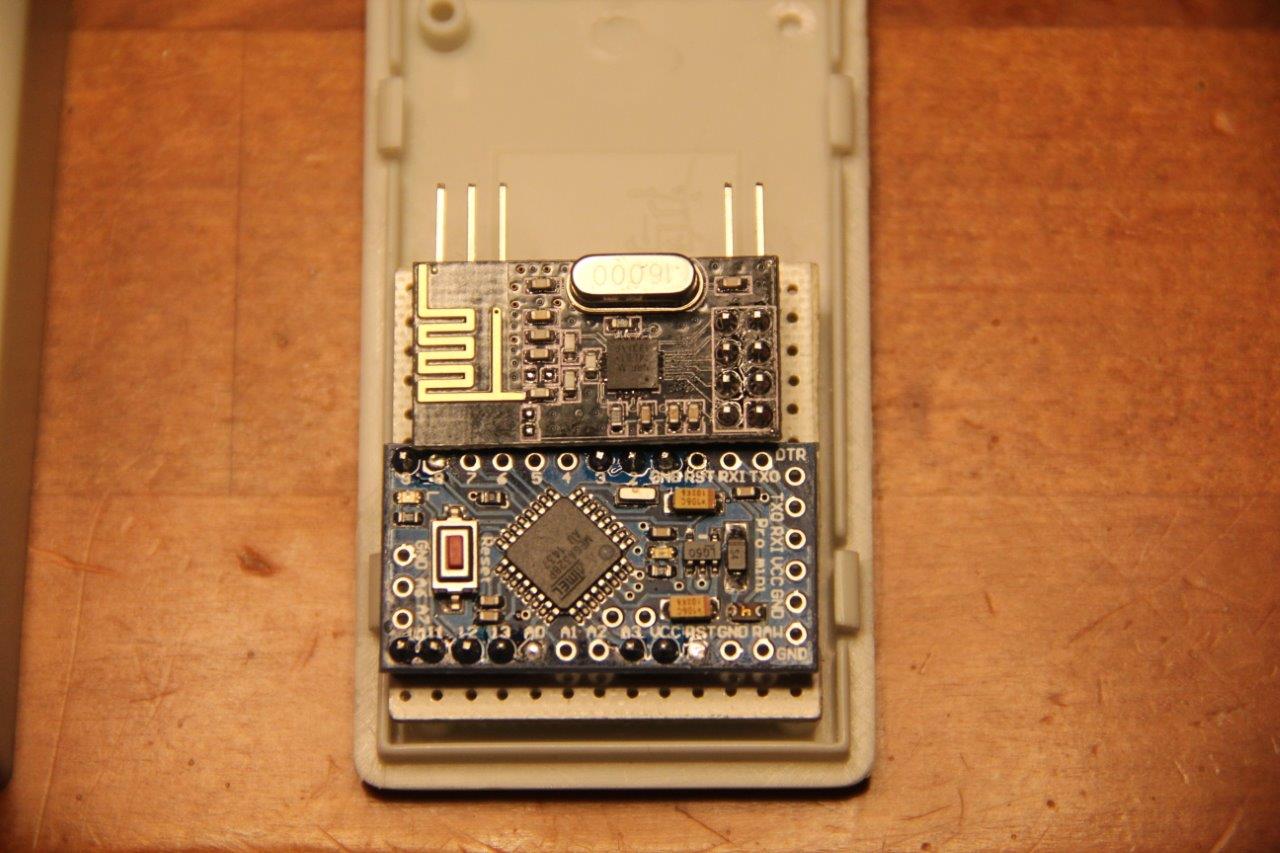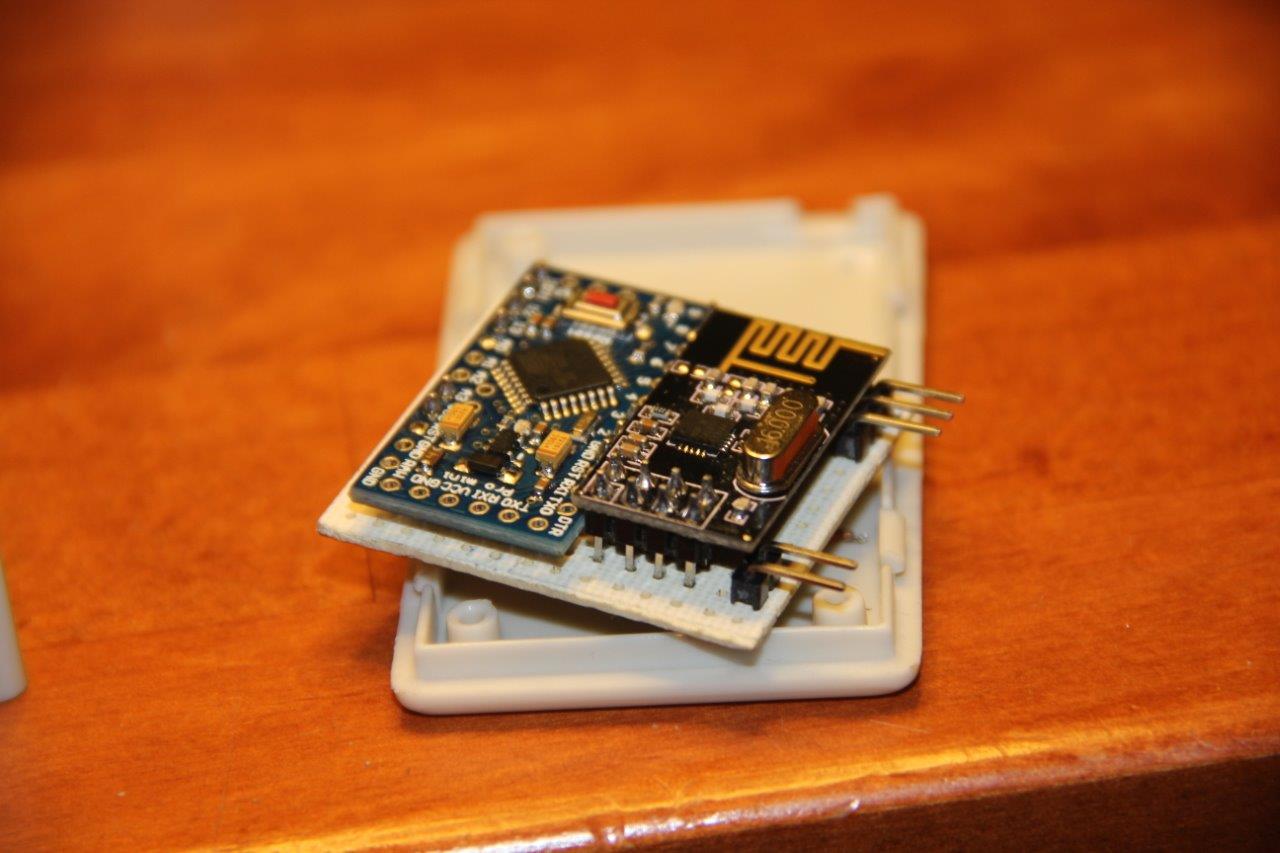My ethernet gateway died and I made another one on a Raspberry Pi so I updated all of my sensors from 1.4 libraries to 2.2. Here's the updated sketch for these servo blind control nodes:
// A sketch to control a servo with a button and MySensors messages
//#define MY_DEBUG
// Enable and select radio type attached
#define MY_RADIO_NRF24
//#define MY_RADIO_RFM69
#include <SPI.h>
#include <MySensors.h>
#include <Servo.h>
#include <Button.h> //https://github.com/JChristensen/Button
#define BUTTON_PIN 4 //Connect a tactile button switch (or something similar)
//from Arduino pin 4 to ground.
#define PULLUP true //To keep things simple, we use the Arduino's internal pullup resistor.
#define INVERT true //Since the pullup resistor will keep the pin high unless the
//switch is closed, this is negative logic, i.e. a high state
//means the button is NOT pressed. (Assuming a normally open switch.)
#define DEBOUNCE_MS 20 //A debounce time of 20 milliseconds usually works well for tactile button switches.
#define LONG_PRESS_PERIOD 700 //How long to keep button pressed until sweeping starts
#define MAX_DEGREES 180 //Servo limits. Whatever works for you.
#define MIN_DEGREES 0
#define CHILD_ID 3
Button myBtn(BUTTON_PIN, PULLUP, INVERT, DEBOUNCE_MS); //Declare the button
Servo myservo;
enum {DECREASING, INCREASING}; //On a servo mounted on the left, with outer slat edge down as closed,
// closing is going toward 180, opening toward 0 (on my fake futaba s3003's)
boolean invertConversions = true; // false if opening toward 180
boolean servoDirection = INCREASING; //A variable that keeps the current servo direction
int servoPin = 3;
int servoPosition;
int servoSpeed = 1; // The bigger, the faster. 1=slow 5=fast
MyMessage msg(CHILD_ID, V_PERCENTAGE);
void setup(void)
{
}
void presentation() {
// Send the sketch version information to the gateway and Controller
sendSketchInfo("Servo", "1.3");
// Register all sensors to gw (they will be created as child devices)
present(CHILD_ID, S_COVER);
}
void loop(void)
{
myBtn.read(); //Read the button
if (myBtn.wasReleased()){ //If the button was pressed once sweep to end of current direction
SweepToDirectionEnd();
send(msg.set(ConvertDegToPercent(servoPosition)));
}
if (myBtn.pressedFor(LONG_PRESS_PERIOD)){ //If the button is held down the servo will start to sweep
SweepUntilStop();
send(msg.set(ConvertDegToPercent(servoPosition)));
}
}
int ConvertPercentToDeg(int percent)
{
int degree;
if (invertConversions)
degree = map(percent, 0, 100, MAX_DEGREES, MIN_DEGREES);
if (!invertConversions)
degree = map(percent, 0, 100, MIN_DEGREES, MAX_DEGREES);
return degree;
}
int ConvertDegToPercent(int degree)
{
int percent;
if (invertConversions)
percent = map(degree, MAX_DEGREES, MIN_DEGREES, 0, 100);
if (!invertConversions)
percent = map(degree, MIN_DEGREES, MAX_DEGREES, 0, 100);
return percent;
}
void receive(const MyMessage &message) {
myservo.attach(servoPin);
if (message.type==V_PERCENTAGE) {
int val = message.getInt();
SweepToPosition(ConvertPercentToDeg(val)); //In this case the value has to be inverted because 0 = open
send(msg.set(val));
}
else if (message.type==V_STATUS) {
if (message.getInt() == 1){
SweepToPosition(ConvertPercentToDeg(100));
send(msg.set(100));
}
else if(message.getInt() == 0) {
SweepToPosition(ConvertPercentToDeg(0));
send(msg.set(0));
}
}
else
myservo.detach();
}
void ServoMoveUp()
{
if ((myservo.attached()) && servoPosition < MAX_DEGREES){
servoDirection = INCREASING;
servoPosition += servoSpeed;
myservo.write(servoPosition);
delay(10);
Serial.print("Servo Position: ");
Serial.println(servoPosition);
}
if (!myservo.attached()){
Serial.println("Servo stopped while moving toward MAX, direction unchanged");
delay(100 * servoSpeed);
}
if (servoPosition >= MAX_DEGREES){
Serial.println("MAX reached, changing direction toward MIN");
servoDirection = DECREASING;
delay(100 * servoSpeed); // Wait for the last movement to finish
}
}
void ServoMoveDown()
{
if ((myservo.attached()) && servoPosition > MIN_DEGREES){
servoDirection = DECREASING;
servoPosition -= servoSpeed;
delay(10);
myservo.write(servoPosition);
Serial.print("Servo Position: ");
Serial.println(servoPosition);
}
if (!myservo.attached()){
Serial.println("Servo stopped while moving toward MIN, direction unchanged");
delay(100 * servoSpeed);
}
if (servoPosition == MIN_DEGREES){
Serial.println("MIN reached, changing direction toward MAX");
servoDirection = INCREASING;
delay(100 * servoSpeed);
}
}
void SweepToDirectionEnd()
{
myservo.attach(servoPin);
if (servoDirection == INCREASING){
Serial.println("Going to MAX and stopping there");
while (servoPosition < MAX_DEGREES){
ServoMoveUp();
}
delay(20 * servoSpeed);
myservo.detach();
}
else if (servoDirection == DECREASING){
Serial.println("Going to MIN and stopping there");
while (servoPosition > MIN_DEGREES){
ServoMoveDown();
}
delay(20 * servoSpeed);
myservo.detach();
}
}
void SweepUntilStop()
{
myservo.attach(servoPin);
while (myBtn.isPressed()){
myBtn.read();
if (myBtn.isReleased())
myservo.detach();
if (servoDirection == INCREASING)
ServoMoveUp();
if (servoDirection == DECREASING)
ServoMoveDown();
}
}
void SweepToPosition(int destination)
{
if (abs(destination - servoPosition) >= servoSpeed) //Don't move if destination is close to position
myservo.attach(servoPin);
if (destination > servoPosition && myservo.attached()){
Serial.print("Going to ");
Serial.print(destination);
Serial.println(" and stopping there");
while (servoPosition < destination){
ServoMoveUp();
}
delay(20 * servoSpeed);
myservo.detach();
}
if (destination < servoPosition && myservo.attached()){
Serial.print("Going to ");
Serial.print(destination);
Serial.println(" and stopping there");
while (servoPosition > destination){
ServoMoveDown();
}
delay(20 * servoSpeed);
myservo.detach();
}
}```

